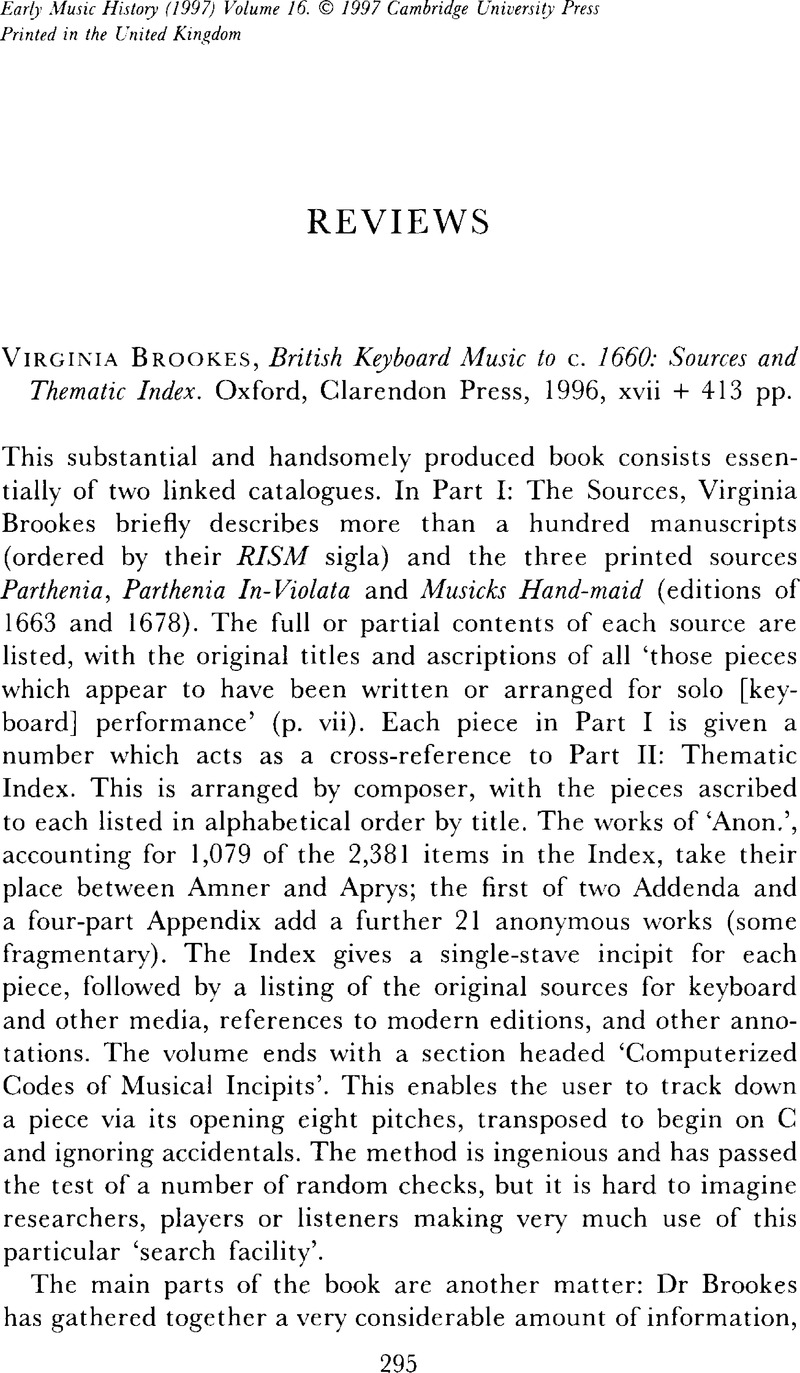No CrossRef data available.
Published online by Cambridge University Press: 05 December 2008

1 The following RISM library sigla are used in this review: Cfm = Cambridge, Fitzwilliam Museum; Dm = Dublin, Marsh's Library; DRc = Durham, Cathedral Library; DRu = Durham, University Library; Dtc = Dublin, Trinity College; En = Edinburgh, National Library of Scotland; Lbl = London, British Library (RM = Royal Music Library); LIp = London, Lambeth Palace Library; Lpro = London, Public Record Office; NYp = New York, Public Library; Obc = Oxford, Brasenose College; Och = Oxford, Christ Church; Pc = Paris, Bibliothèque Nationale; Tn = Tokyo, Nanki Music Library; Y = York, Minster Library.
2 Harley, , British Harpsichord Music, i, p. 83Google Scholar. Another MS listed in Harley, and not in Brookes, is Lbl Add. MS 4388 (‘after 1653’); but its two two-part pieces on fol. 103v may not be for keyboard. Under ‘Printed Music’ Harley lists de Caus, S., Les raisons des forces mouvantes (Frankfurt am Main, 1615)Google Scholar, with a transcription by Peter Philips of Striggio's Chi fara.
3 In her list of Abbreviations for Manuscript Sources (p. ix) Brookes mentions ‘LCL (GB) (In private hands)’; this MS remains elusive, since it does not feature in Part I of the book.
4 In Seventeenth-Century English Keyboard Music: Benjamin Cosyn (New York, 1993)Google Scholar.
5 In Sundry Sorts of Music Books: Essays on the British Library Collections, Presented to Oliver Neighbour on His 70th Birthday, ed. Banks, C., Searle, A. and Turner, M. (London, 1993), pp. 129–45Google Scholar.
6 ‘An Early Seventeenth-century Book of English Organ Music for the Roman Rite’, Music & Letters, 52 (1971), pp. 27–38Google Scholar.